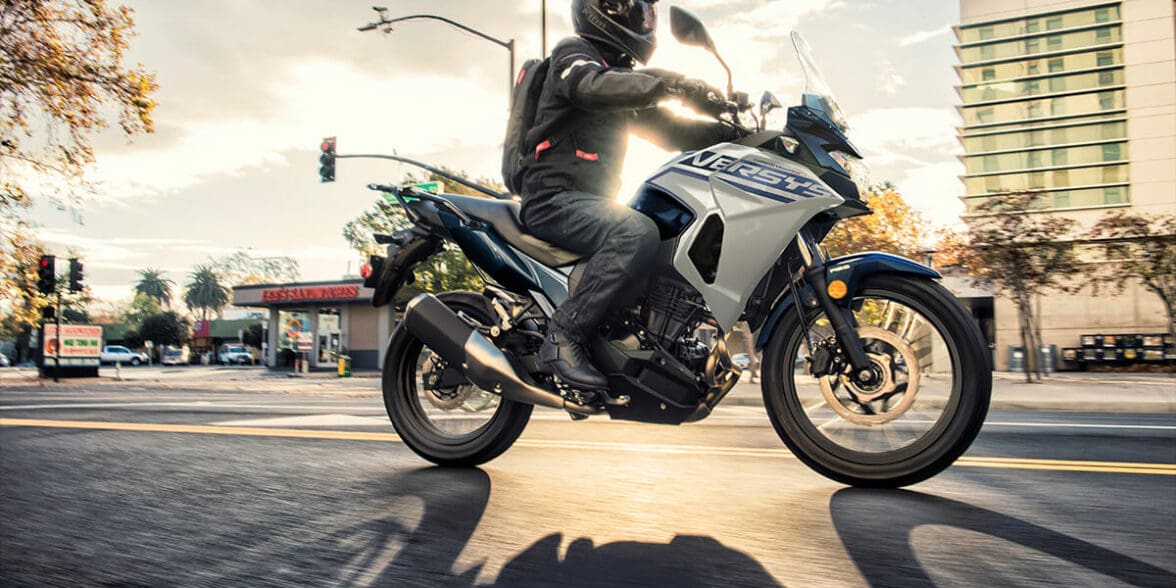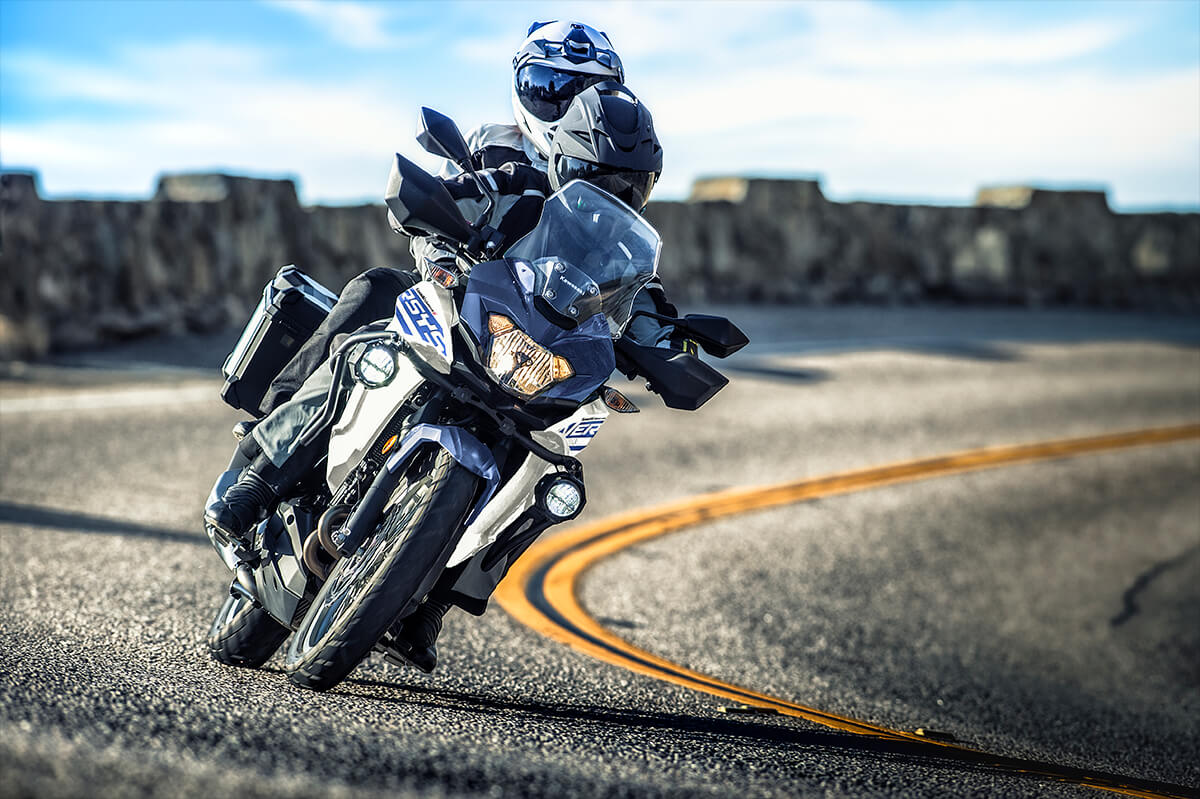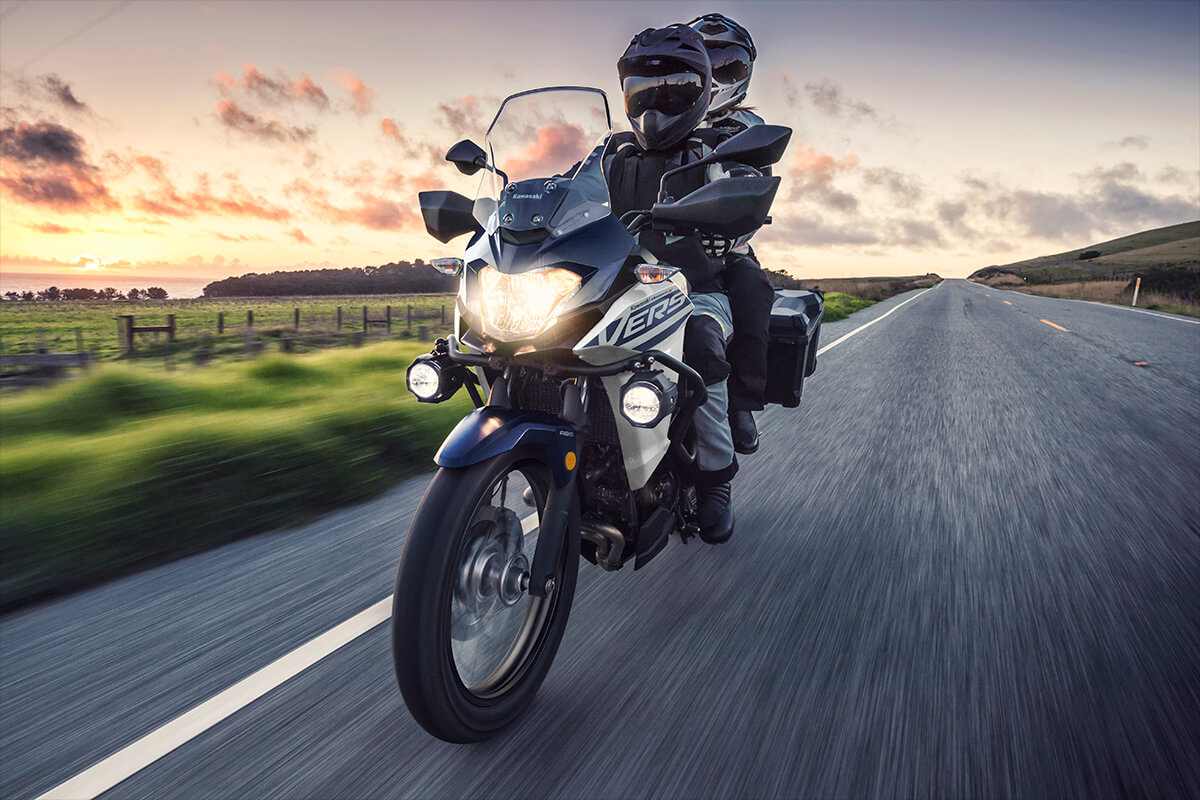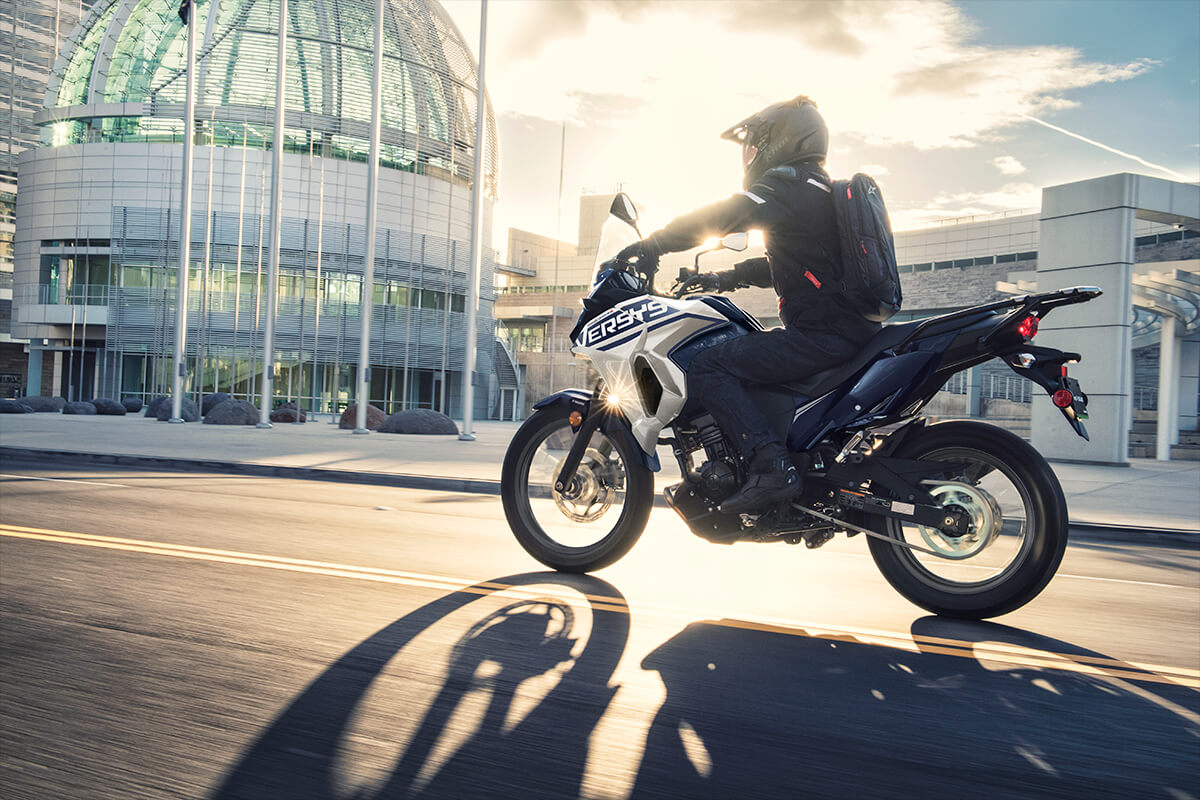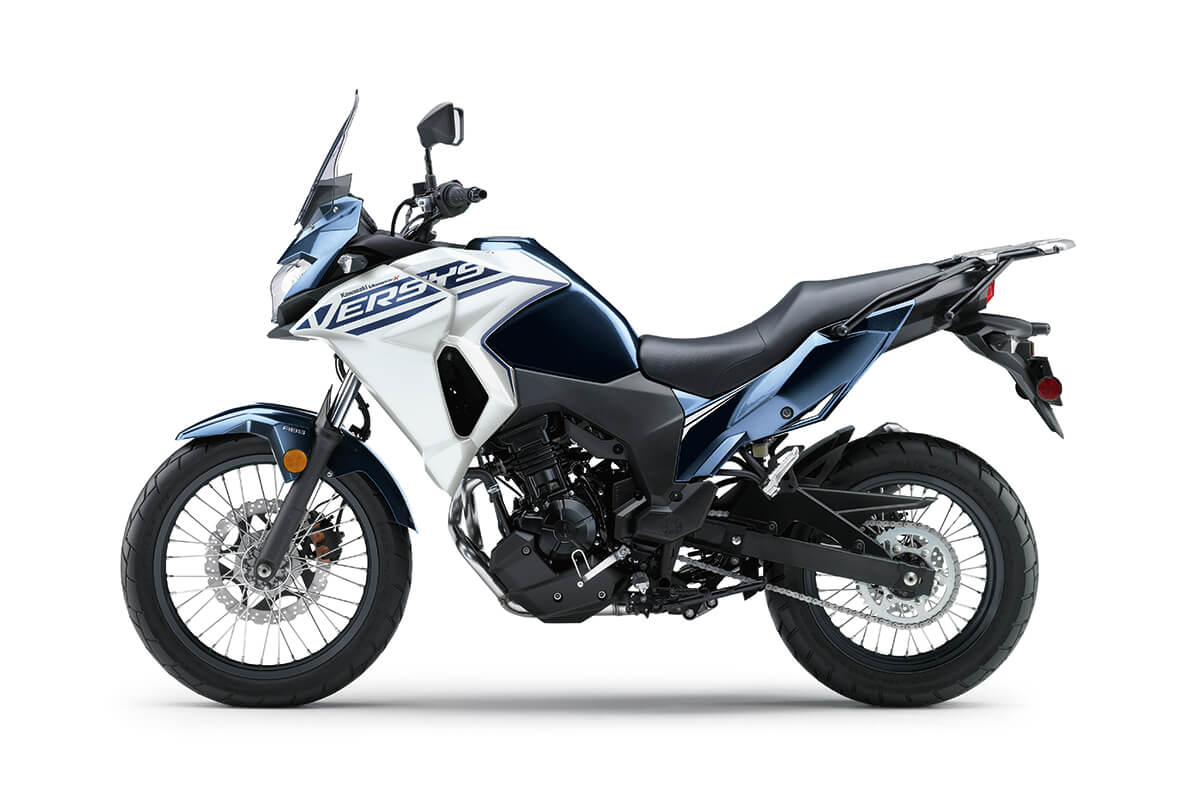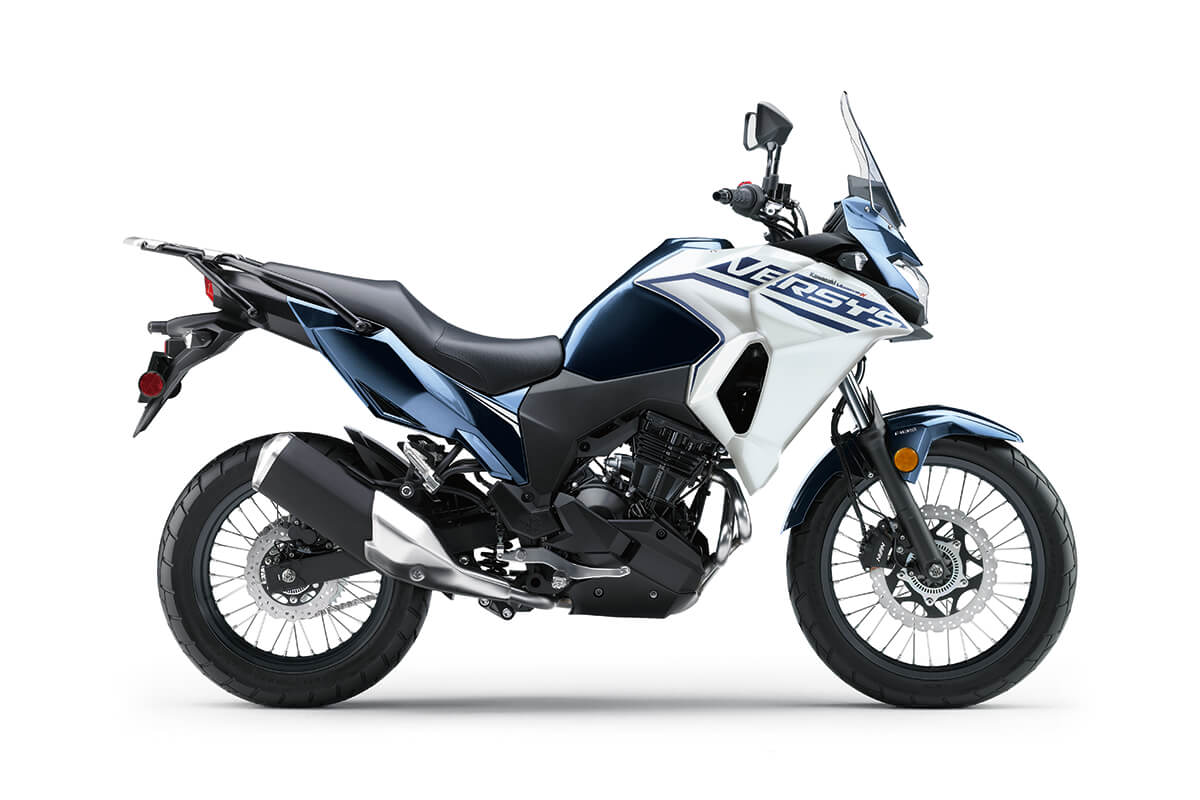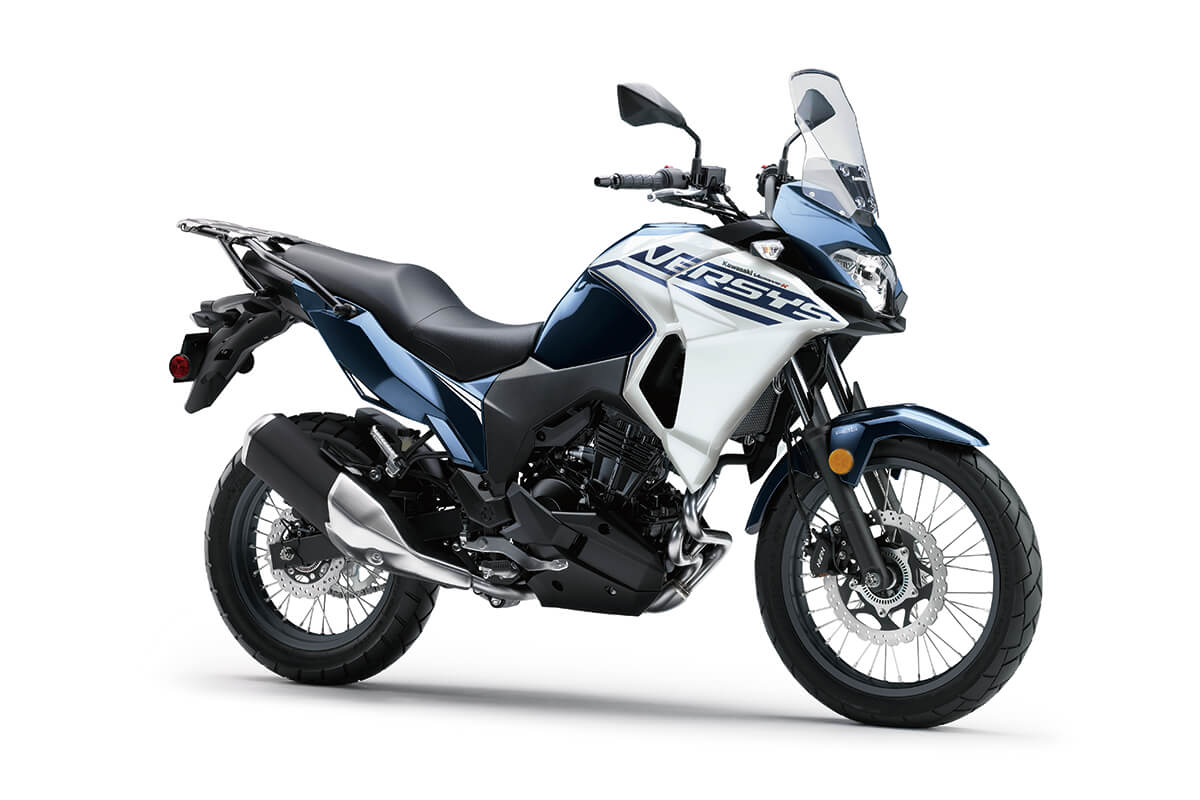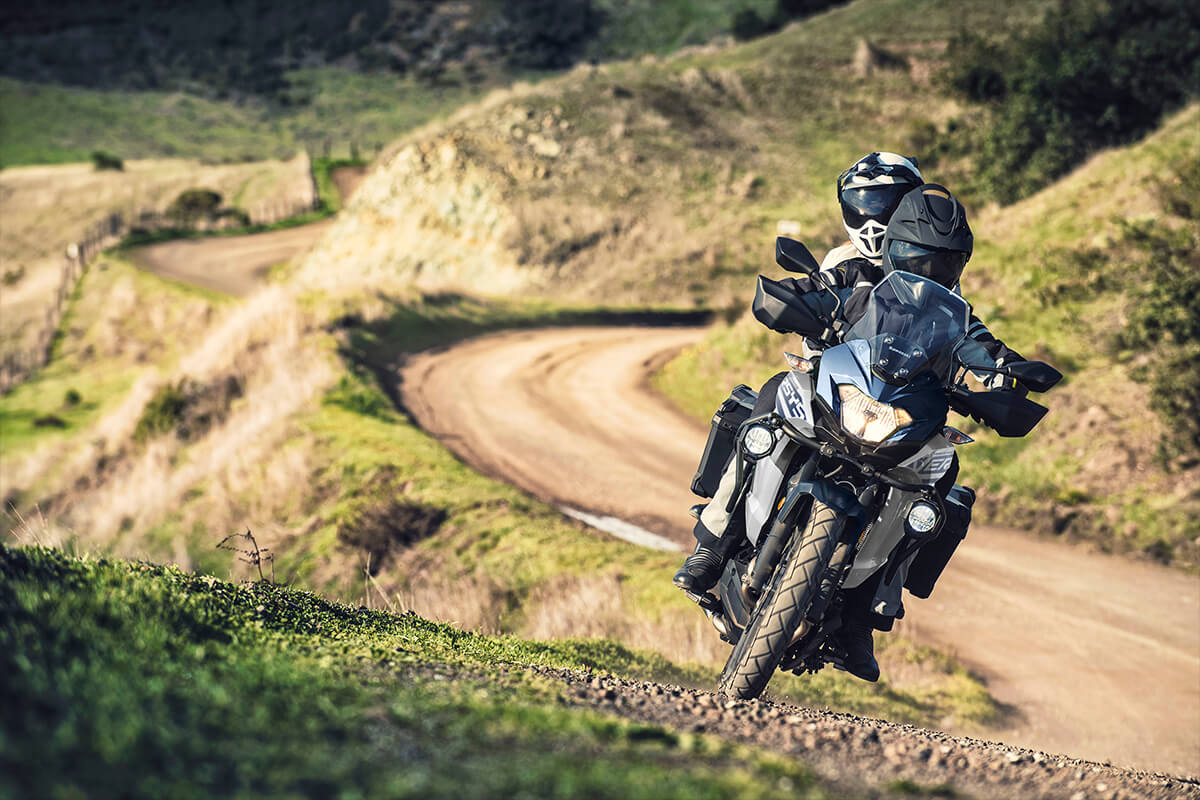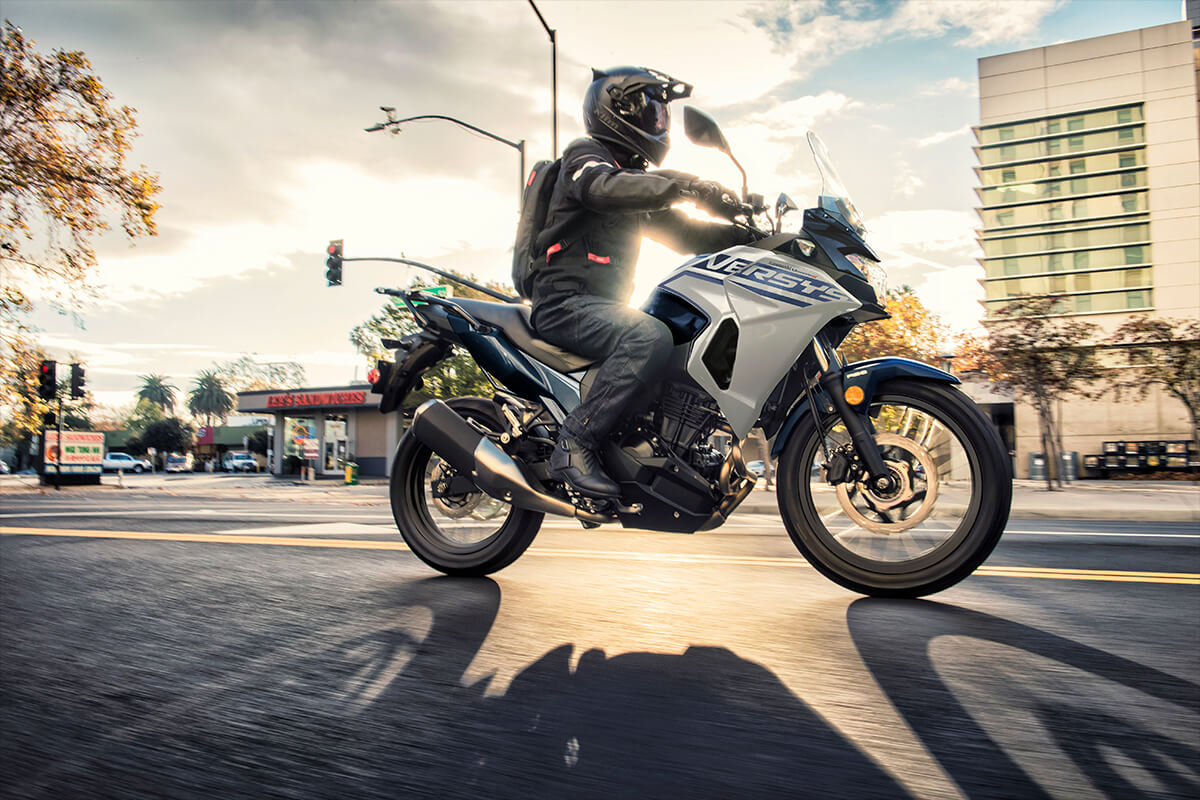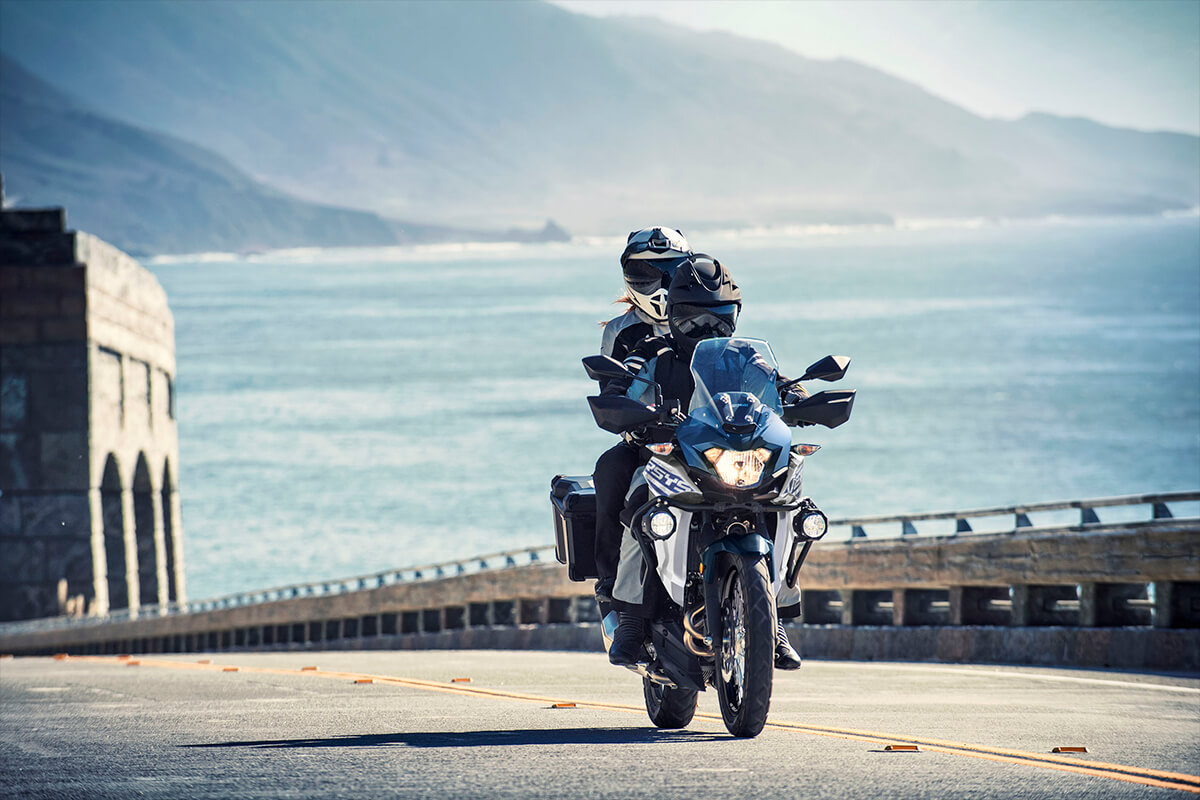The 2022 Kawasaki Versys-X 300 ABS: Sporty & Nimble Adventure Touring
Contents
Adventure bikes are all about versatility, and few brands know that better than Kawasaki. Team Green’s Versys series is famous for providing plenty of performance over long distances and varied terrains, without sacrificing comfort or rider amenities along the way. And for those seeking a smaller-displacement adventure motorcycle, the 2022 Versys-X 300 ABS is an ideal choice.
Other Japanese motorcycle companies have made adventure bikes, of course—you’ve got the Honda CB500X, for example, which offers slightly more power for a slightly higher price. But Kawasaki’s done an excellent job of offering value in a smaller, more affordable adventure motorcycle, and the new model carries on in much the same vein.
You’ve got the same engine that graces the Ninja 300 here—a 296cc liquid-cooled 4-stroke DOHC 8-valve parallel twin producing 40 HP @ 11,500 rpm and just over 19 lb-ft of torque @ 10,000 rpm. You also get long-travel suspension (practically a requirement for a bike that’s designed to go off-road occasionally), an assist & slipper clutch to make those shifts a bit easier, an economical riding indicator, and (of course) ABS.
No major upgrades from last year’s model here, but you do get a new color scheme: Metallic Ocean Blue / Pearl Robotic White, which gives this machine a cool, modern look. Yes, it’s the smallest adventure bike in the 2022 Kawasaki motorcycle lineup, but that doesn’t mean you should overlook it. This is a serious adventure bike that’s perfect for introducing riders to longer road trips over varied terrain.
The 2022 Kawasaki Versys-X 300 ABS starts at $6,099 USD / $6,999 CAD.
Model Overview
General Info
- Price: $6,099 USD / $6,999 CAD
- Key Features:
- Long-travel suspension
- Assist & slipper clutch
- Economical riding indicator
- ABS
Main Specs
- Engine: 296cc liquid-cooled 4-stroke DOHC 8-valve parallel twin
- Power: 40 HP @ 11,500 rpm
- Torque: 19.2 lb-ft of torque @ 10,000 rpm
- Curb Weight: 386 lbs (175 kg)
- Seat Height: 32.1 in (815mm)
Competitors
2022 Kawasaki Versys-X 300 ABS Specifications
ENGINE |
||
| Engine | 296cc, 4-stroke, 2-cylinder, DOHC, liquid-cooled | |
| Power | 40 Hp | |
| Bore x Stroke | 62.0 x 49.0mm | |
| Compression Ratio |
10.6:1
|
|
| Fuel System | DFI® with 32mm throttle bodies (2) | |
| Starter | Electric | |
| Lubrication | ||
DRIVETRAIN |
||
| Clutch | ||
| Transmission | 6-speed, return shift | |
| Final Drive | Sealed chain | |
CHASSIS |
||
| Suspension Front | Telescopic fork/5.1 in | |
| Suspension Rear | Uni-Trak® swingarm/5.8 in | |
| Brakes Front | 100/90-19M/C 57S | |
| Brakes Rear |
130/80-17M/C 65S
|
|
| Tires Front | Single 290mm disc, ABS | |
| Tires Rear | Single 220mm disc, ABS | |
| Fuel Tank Capacity | 4.5 gal | |
| Color |
Metallic Ocean Blue/Pearl Robotic White
|
|
ELECTRICAL |
||
| Ignition | TCBI with digital advance | |
| Spark Plugs | ||
| Headlight | LED | |
| Tail Light | LED | |
DIMENSIONS |
||
| Overall Length | 85.4 in | |
| Overall Width | 33.9 in | |
| Overall Height | 54.7 in | |
| Wheelbase | 57.1 in | |
| Ground Clearance | 7.1 in | |
| Seat Height | 32.1 in | |
| Curb Weight | 385.9 lb* | |
WARRANTY |
||
| Warranty | 12 Months | |
| Kawasaki Protection Plus | 12, 24, or 36 months | |
2022 Kawasaki Versys-X 300 ABS Features
Assist & Slipper Clutch
Under normal operation, the assist cam functions as a self-servo mechanism, pulling the clutch hub and operating plate together to compress the clutch plates. This allows the total clutch spring load to be reduced, resulting in a lighter clutch lever feel when operating the clutch.
When excessive engine braking occurs – as a result of quick downshifts (or an accidental downshift) – the slipper cam comes into play, forcing the clutch hub and operating plate apart. This relieves pressure on the clutch plates to reduce back-torque and helps prevent the rear tire from hopping and skidding. This race-style function is particularly useful when sport or track riding.
Dual Throttle Valves
On models with dual throttle valves, there are two throttle valves per cylinder: in addition to the main valves, which are physically linked to the throttle grip and controlled by the rider, a second set of valves, opened and closed by the ECU, precisely regulates intake airflow to ensure a natural, linear response. With the air passing through the throttle bodies becoming smoother, combustion efficiency is improved and power is increased.
Economical Riding Indicator
While effective vehicle speed and engine speed may vary by model, paying attention to conditions that cause the “ECO” mark to appear can help riders improve their fuel efficiency – a handy way to increase cruising range. Further, keeping fuel consumption low also helps minimize negative impact on the environment.
ABS (Anti-lock Brake System)
ERGO-FIT
ERGO-FIT® is an interface system designed to allow riders to find their ideal riding position. Various points of the chassis interface (the handlebar, footpegs and seat, etc.) can be adjusted through a combination of interchangeable parts and parts with adjustable positions. This enables a wide range of riders to find a riding position that offers both comfort and control. Feeling at one with their machine, they will be able to experience how Kawasaki machines are fun and rewarding to ride.
*Adjustable parts and their range of adjustability vary by model.
2022 Kawasaki Versys-X 300 ABS Photos
2022 Kawasaki Versys-X 300 ABS Videos
Kawasaki Versys X300 Review – First Ride – My Opinion Of This Small ADV Motorcycle
Kawasaki Versys-X 300 On and Off Road Test Ride: My New Favorite Adventure Bike for Beginners
Links
Kawasaki Official Websites


